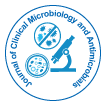

Perspective - (2023)Volume 7, Issue 4
Mycobacteria, a distinctive family of bacteria, includes several species known for their complex cell wall structure and diverse physiological characteristics. Among them, Mycobacterium tuberculosis, the causative agent of tuberculosis, holds significant medical importance. Understanding the bacteriologic features of mycobacteria is crucial for diagnosing and treating infections caused by these organisms.
Cell wall structure
One of the prominent features that sets mycobacteria apart is their complex cell wall structure. Unlike many other bacteria, mycobacteria have a unique cell envelope that plays a crucial role in their survival and resistance to various environmental stresses. The mycobacterial cell wall consists of three major layers:
Plasma membrane: The innermost layer of the mycobacterial cell wall is the plasma membrane, which is typical of bacterial cells. It contains proteins and lipids involved in various cellular functions.
Peptidoglycan layer: Beneath the plasma membrane lies a layer of peptidoglycan, a polymer of sugars and amino acids. However, the peptidoglycan layer in mycobacteria is thinner than in many other bacterial species.
Mycolic acid layer: The outermost layer is made up of mycolic acids, complex lipids that provide mycobacteria with their characteristic resistance to staining. This lipid-rich layer acts as a protective barrier, contributing to the acid-fast nature of mycobacteria.
Acid-fast staining
This property of mycobacteria, particularly notable in M. tuberculosis, is a key diagnostic characteristic. Acid-fast staining, also known as the Ziehl-Neelsen stain, involves using a combination of carbol fuchsin and acid-alcohol to identify mycobacteria under the microscope. The mycolic acid layer in the cell wall retains the stain even after decolorization, leading to the characteristic red or pink coloration of acid-fast bacteria.Slow growth rate
Mycobacteria are notorious for their slow growth rate, a feature that poses challenges in both laboratory cultivation and clinical management. The slow doubling time of mycobacteria, often measured in hours to days rather than minutes like many other bacteria, necessitates prolonged incubation periods for laboratory cultures.
Obligate aerobes
Mycobacteria are obligate aerobes, meaning they require oxygen for growth. This aerobic nature influences their distribution in the environment and the types of infections they cause in humans and animals. The preference for aerobic conditions also contributes to their slow growth, as oxygen availability influences metabolic processes.
Resilience to environmental stress
Mycobacteria exhibit remarkable resilience to environmental stressors, allowing them to persist in diverse conditions. The unique cell wall structure, particularly the mycolic acid layer, contributes to their resistance to harsh environmental factors, including desiccation and exposure to disinfectants.
High lipid content
Mycobacteria have a high lipid content, a feature that contributes to their resistance to drying and enables them to survive in the environment for extended periods. Lipids, including mycolic acids, play a role in the impermeability of the cell wall and contribute to the pathogenicity of mycobacterial species.
Genetic diversity
The mycobacterial family is genetically diverse, with different species exhibiting unique genomic characteristics. The availability of advanced molecular techniques, such as DNA sequencing, has facilitated the exploration of the genetic diversity among various mycobacterial strains. Understanding the genetic makeup of mycobacteria is essential for tracking the spread of drug-resistant strains and developing targeted treatment strategies.
Virulence factors
Mycobacteria possess virulence factors that enable them to evade host immune responses and establish persistent infections. Some key virulence factors include:
Cord factor (trehalose dimycolate): It is a unique mycobacterial glycolipid that contributes to the formation of characteristic cord-like structures in vitro. It plays a role in the pathogenesis of mycobacterial infections by modulating host immune responses.
Lipoarabinomannan (LAM): It is a cell wall component that contributes to mycobacterial virulence. It has immunomodulatory properties and plays a role in the evasion of host immune surveillance.
Esat-6 and cfp-10: Mycobacteria, including M. tuberculosis, produce secreted proteins such as ESAT-6 (Early Secreted Antigenic Target 6) and CFP-10 (Culture Filtrate Protein 10), which are involved in the manipulation of host immune responses.
Understanding these virulence factors is crucial for developing targeted therapeutic interventions and vaccines against mycobacterial infections.
Clinical significance
Mycobacteria have significant clinical implications, with some species causing infections that range from latent and asymptomatic to severe and life-threatening. Mycobacterium tuberculosis is the primary causative agent of tuberculosis, a global public health concern. Other mycobacterial species, such as Mycobacterium leprae (causing leprosy) and non-tuberculous mycobacteria (associated with opportunistic infections), also have clinical importance.
The bacteriologic features of mycobacteria underscore the unique and complex nature of this bacterial family. From their distinctive cell wall structure to their slow growth rate and resilience to environmental stressors, mycobacteria have evolved unique adaptations that contribute to their pathogenicity and clinical significance. Understanding these features is crucial for the development of effective diagnostic tools, therapeutic strategies, and preventive measures to combat mycobacterial infections, particularly those caused by highly virulent species such as Mycobacterium tuberculosis. Ongoing research in mycobacteriology continues to unravel the intricacies of these fascinating bacteria, providing insights that contribute to advancements in public health and clinical medicine.
Citation: Stork D (2023) Bacteriologic Features of Mycobacteria. J Clin Microbiol Antimicrob. 7:176.
Received: 17-Nov-2023, Manuscript No. JCMA-23-28707; Editor assigned: 20-Nov-2023, Pre QC No. JCMA-23-28707 (PQ); Reviewed: 05-Dec-2023, QC No. JCMA-23-28707; Revised: 12-Dec-2023, Manuscript No. JCMA-23-28707 (R); Published: 19-Dec-2023 , DOI: 10.35248/jcma.23.7.176
Copyright: © 2023 Stork D. This is an open-access article distributed under the terms of the Creative Commons Attribution License, which permits unrestricted use, distribution, and reproduction in any medium, provided the original author and source are credited.